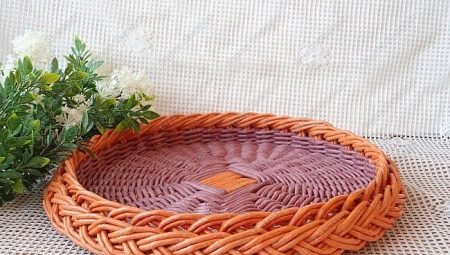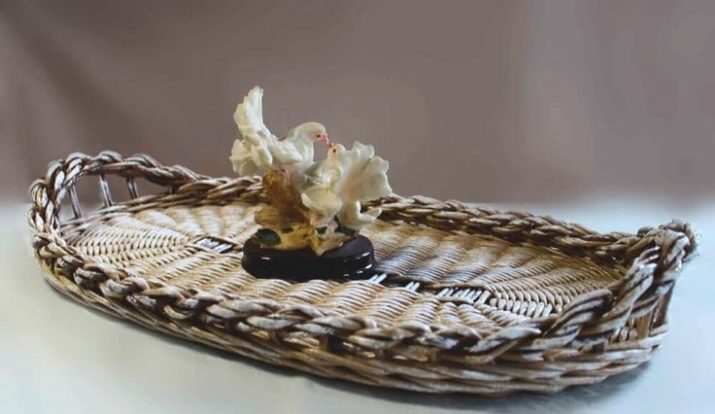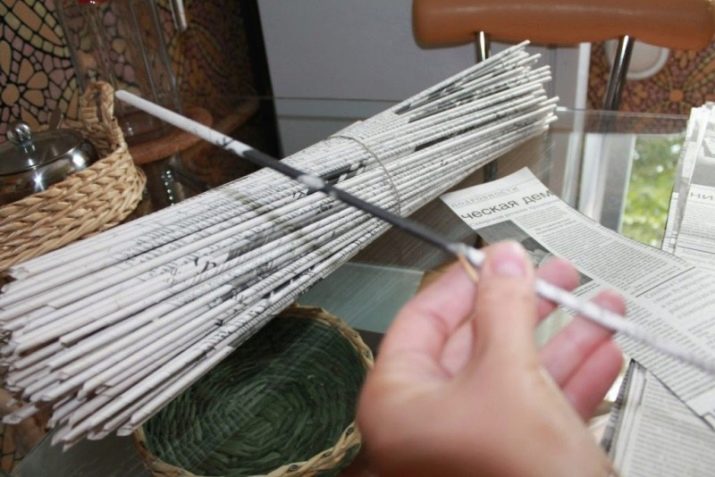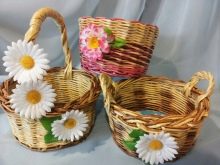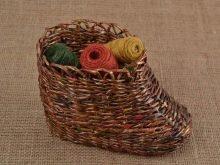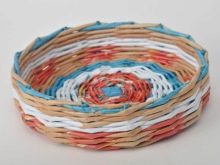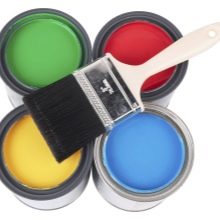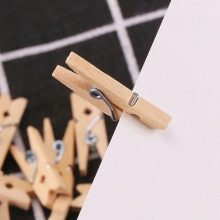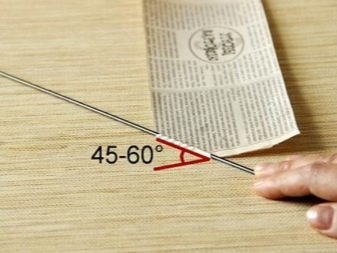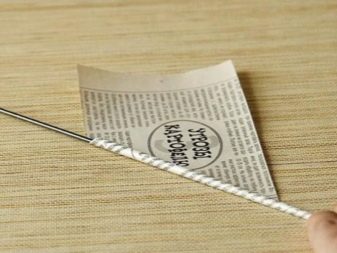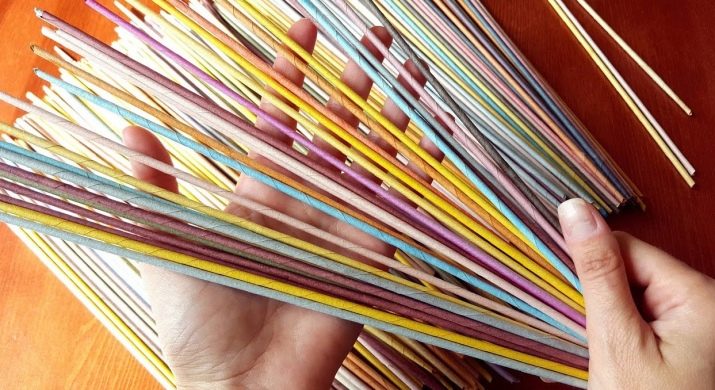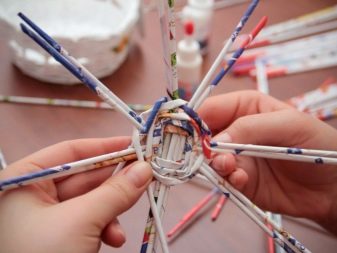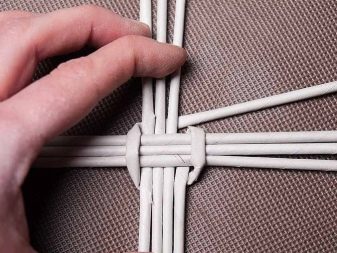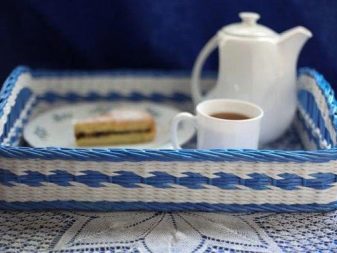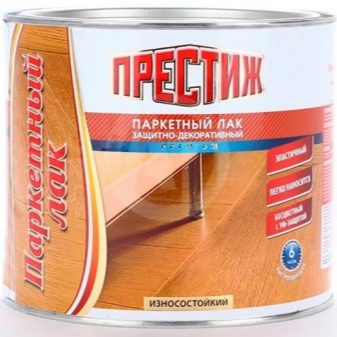If a lot of old newspapers have accumulated at home, you don’t need to hurry to throw them out. Paper can be used for the manufacture of decorative items or any practical products in everyday life. A tray of newspaper tubes will combine two qualities at once: benefit and decoration. Methods of its manufacture will be considered in more detail in this article.
Features of work with tubules
The use of tubes from newspapers for the manufacture of wicker products is increasingly gaining popularity. First of all, this is due to the convenience of working with the material and the minimum expenditure of time and finances. Harvesting wooden branches requires certain skills.
From the quality of wood and the correctness of its processing will depend on the convenience of working with it. In addition, the house will need a lot of free space for the preparation of the required number of branches and their proper preparation.
Newspaper sheets do not require a lot of time and any special skills - it is pretty easy to twist the tubes out of them.
Such material is very convenient for work for beginners in weaving. Also paper gives a wide scope for the implementation of interesting ideas. Tubes can be painted in different colors.
Paper bends easily and therefore it is possible to weave trays of various forms from it: round, oval, openwork and rectangular. Tubes, if necessary, can be extended, making them quite long. Thus, from them it is possible to make objects of various sizes, be it a large tray or small handles for it.
The main disadvantage of the use of newspaper tubes are poor qualities of strength and water resistance. Partially, this minus can be corrected with the help of additional processing of tubes and the finished product with special compositions.
Necessary tools and materials
Before starting the main work, you need to prepare the workplace and all the necessary materials and tools. First of all, you need a stack of newspapers, while they should not be too old and already yellowed, and crumpled and torn. In addition to newspaper sheets, you will need the following:
- office knife and scissors;
- plywood or several sheets of thick cardboard for the manufacture of the bottom;
- paints and varnishes;
- adhesive compositions;
- ruler and simple pencil;
- brushes for dyeing rods and applying glue;
- clothespins for fixing paper vines during weaving;
- large needle with a diameter of 1 to 1.5 mm.
As the adhesive composition is best to use building glue PVA. For the manufacture of newspaper tubes usually take a universal adhesive composition for any type of construction work, for example, glue "Titan".
Newspaper Preparation
The next step in the manufacture of the tray will be the preparation of newspaper tubes. Sheets of newspapers must be cut into strips. Their length and width will depend on the size of the future tray. It is also possible to share a newspaper both along and across. Consider one of the examples of manufacturing tubes step by step.
- A large sheet is cut along the fold.
- The resulting sheets of paper are cut on the narrow side into equal parts, a little more than 5 cm wide. The required number of strips will also depend on the size of the tray to be made. It may take about 90 tubes, but it is better to prepare rods with a margin. In addition, the tubes are required for the manufacture of the frame.
- The edge of one of the long sides of a cut piece of a newspaper is coated with an adhesive. The needle is placed on the lower angle of the side, on which glue is not applied, at a small angle of 30 degrees and slowly begin to fold the newspaper.
- From the resulting tubule gently pull the needle. You can once again smear glue sticking angle and it is good to press it to the resulting twig.
The same manipulations must be done with other strips of the newspaper. If it is necessary to extend the rods, for this purpose one tube is inserted 1.5 cm into the other on the side where the hole has the largest diameter.
Next, you need to paint the bars and let them dry.
As a dye, you can use wood stain or acrylic paint.
Master class on making
You can weave the tray only after the base and frame have been prepared. The basis can be plywood or cardboard. A piece of the desired shape and size is cut out of the material. If cardboard is used as the base, then two identical pieces will be required.
Labels are placed on the cut sheet along the perimeter with a simple pencil every centimeter. Next, small rods are glued to the marked places, which will serve as a frame. For better adhesion of materials after sticking the tube is recommended additionally secure with clothes pegs.
Instead of clothespins, you can use any heavy flat objects as a press. Another fixing option is to make holes at the edges along the edges, thread pipes into them and also attach them to glue. In the case of using a square or rectangular base do not forget to attach the tube to all four corners.
If cardboard was used for the base, then a second piece of the base was glued to the side to which the rods were attached. After the product dries well, the tubes bend upward and you can proceed to the very weaving of the tray. The easiest way to weave it "eight".
In the process of weaving, you can build up the tube, one into the other. It is best to lubricate the junction with glue. Also, the adhesive mixture is recommended to use for better fixation of the tubes in the place where each row ends. If you wish, you can combine several weaving techniques at once and use rods of different colors.
The height of the walls of the tray can also be selected individually, based on considerations of aesthetics of the appearance of the product and ease of use. When all the rows are woven, the protruding pieces of the frame must be cut with scissors, leaving at least 1 cm each, which must be bent and glued to the walls of the tray. Gluing is also recommended to pinch pins for better fixation of materials. Further it will be necessary only to decorate the finished product and give it strength.
How to make a tray of newspapers, see below.
Registration
The finished product must be given an aesthetic appearance and strength. Despite the fact that the tubes from the newspapers were painted in advance, the tray will need to be primed. As a basis for the priming mixture, you can use PVA glue or acrylic-based varnish. Both varnish and glue are mixed with ordinary water in equal quantities.
It is more practical to make a primer out of varnish, as the composition based on PVA begins to turn yellow on the product over time. The priming mixture is applied to the surface of the tray from the inside and outside. Next, the primer should dry, after which the product is varnished. The coating can be both glossy and matte, depending on the selected composition.
For the finishing coating suitable composition on acrylic base, which is applied in two layers. When choosing a tool, it is best to build on how the finished product will be used. Coffee and tea trays will be constantly subject to spilling various drinks on them.
If it is necessary to give the tray good water-repellent properties, then it is best to apply varnish for parquet or baths on it.
